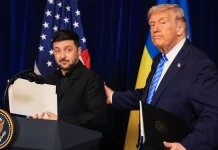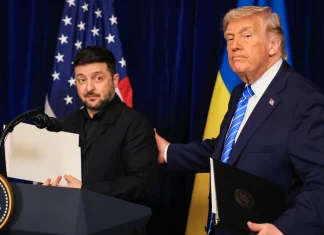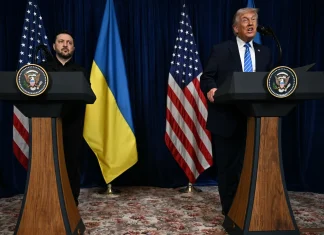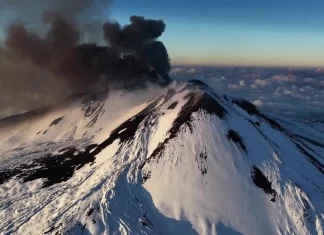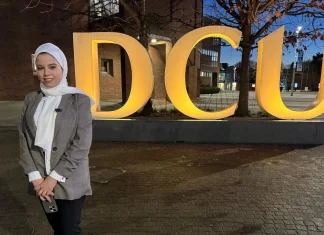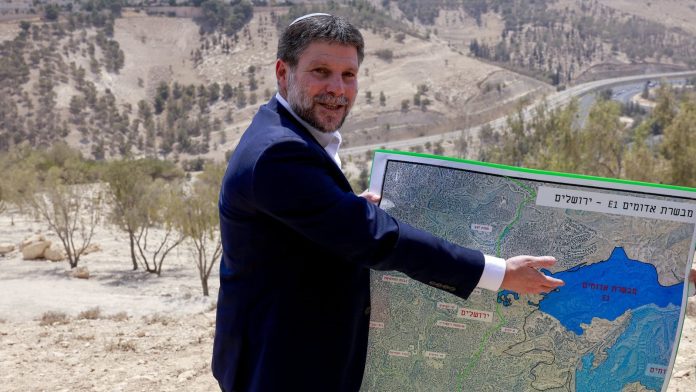
When Land Becomes Contested Ground: The Deepening Rift Over Israeli Settlements in East Jerusalem
In a moment echoing with both urgency and tension, 21 nations have come together to issue a unified rebuke against Israel’s recent approval of a controversial settlement project in the West Bank’s E1 area, near Jerusalem. Among these countries is Ireland, standing shoulder to shoulder with global players like the United Kingdom, France, Australia, Canada, and Italy. Their message? The decision is “unacceptable and a violation of international law.”
But what lies beneath this diplomatic statement is a profound story of a land caught between ancient ties and modern political strife—where every stone laid, every fence erected, reverberates far beyond the immediate borders.
The E1 Flashpoint: More Than Just a Piece on the Map
At the heart of this uproar is the E1 area, a stretch of disputed land strategically perched to the east of Jerusalem, sandwiched between Israeli settlements and Palestinian neighborhoods. The Israeli government’s plan to build thousands of new homes here has ignited fierce debate, both locally and internationally.
For many Palestinians, E1 is a vital corridor connecting East Jerusalem with the broader West Bank, a lifeline supporting their prospects for an independent state. But the Israeli administration, particularly championed by Far-Right Finance Minister Bezalel Smotrich, views these settlements as essential to the country’s security and identity.
“This is where history, faith, and statecraft collide,” explains Dr. Yara Al-Masri, a Palestinian political analyst based in Ramallah. “For Palestinians, losing this area risks fracturing their territorial continuity. For Israelis like Smotrich, advancing the settlements ‘buries’ the notion of a Palestinian state, but fortifies what they see as their rightful homeland.”
International Outcry: Legal and Moral Dimensions
At the United Nations, voices rang loud and clear. The UN Human Rights Office labeled the settlement expansion not just illegal, but termed the forced eviction of Palestinians in the vicinity a “war crime.” That’s a grave accusation, underscoring the severity with which these actions are viewed on the world stage.
The joint statement by the 21 countries emphasized that unilateral moves like this one erode the collective aspiration for stability in the Middle East. “We condemn this decision and call for its immediate reversal in the strongest terms,” the statement read, urging Israel to retract the plans and abide by UN Security Council Resolution 2334—a resolution passed in 2016 that explicitly demands Israel cease settlement activities in occupied territories.
On the streets of Bethlehem, in the shadow of the looming concrete walls, locals voice their fears. “My grandfather’s olive trees stand just beside the E1 area,” says Ahmad Khalil, a farmer in his fifties. “If they do this, it’s not just land they take—it’s history, livelihood, and hope for my children’s future.”
A Town Divided: Demographics and Daily Life
The demographic landscape only complicates matters further. Roughly 700,000 Israeli settlers live interspersed with approximately 2.7 million Palestinians across the West Bank and East Jerusalem. This dense and volatile mosaic contradicts any neat geographic or political division.
East Jerusalem, officially annexed by Israel in 1980, remains a flashpoint because most of the international community refuses to recognize this annexation. While Israel continues to assert sovereignty, the West Bank exists in a complex limbo—neither fully annexed nor entirely relinquished—a status that sparks endless debate over legality.
International legal bodies have weighed in repeatedly. The International Court of Justice, for instance, has reportedly condemned Israel’s settlement policies and resource exploitation in Palestinian territories as breaches of international law. Yet these pronouncements struggle to translate into tangible change.
The Two-State Dream: Fading or Fragile?
For decades, the international community’s favored blueprint for peace has been the two-state solution—a vision where an independent Palestine coexists peacefully alongside Israel, sharing borders, perhaps with East Jerusalem as a capital of a Palestinian state. But with each expansion of settlement construction, that vision seems to drift further away.
The joint statement from the 21 countries succinctly captures this bleak reality: “Minister Smotrich says this plan will make a two-state solution impossible by dividing any Palestinian state and restricting Palestinian access to Jerusalem—bringing no benefits to the Israeli people. Instead, it risks undermining security and fuels further violence and instability.”
A recent poll by the Palestinian Center for Policy and Survey Research shows that nearly 65% of Palestinians doubt the two-state solution is still viable, reflecting growing frustration and disillusionment across generations.
Shedding Light on Complex Narratives
So where does this leave all of us observing from afar? The settlement saga is about more than geopolitical chess moves. It’s a stark reminder of how fragile peace is when layered histories collide with present-day realities.
When you walk through the narrow lanes of Jerusalem’s Old City or gaze upon the rugged West Bank hills, you see a land where faith, family, and identity are woven tightly together—but so too is suspicion and grief.
“People on both sides dream of peace,” reflects Miriam Stein, an Israeli peace activist. “But when land—the very soil beneath their feet—becomes a battleground, peace feels like a distant dream. The question is: can we find common ground before the ground itself is lost?”
And this—this question—is perhaps where the world’s attention needs to focus. The stakes here are not only about sovereignty or borders but about human dignity, historical justice, and whether two peoples can truly share a land scarred by deep wounds.
Looking Ahead: What Now?
Will international pressure force a reversal of the E1 settlement plans? Or will local political agendas push ahead, deepening divisions? What role will global powers play in mediating this fragile conflict? And how will the people living here—Palestinians and Israeli settlers alike—navigate the uncertain road ahead?
For many, the answers remain unclear.
But one thing is certain: the story of E1 and the West Bank is a vivid chapter in a much longer narrative about land, identity, justice, and coexistence. And as it unfolds, it calls on all of us to listen carefully, reflect deeply, and engage compassionately.
What do you think? Can peace survive such divisions? Or does the geography of bitterness foretell a future of endless conflict? The story continues—and so must the conversation.


